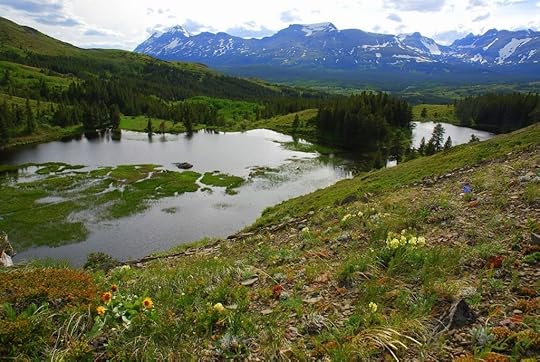First, it gets bigger
Before it can get smaller, it must first get bigger.
That’s got to be one of the laws of editing.
Last week I finished another draft of The Glacier Gallows, the fourth book in the Cole Blackwater series. It tips the scales at 100,479 words. At the end of the first draft it was 91,400 words. Between drafts one and three I found 9,000 words-worth of things I hadn’t said.
I also cut a bunch of pointless shlock out during this draft; I think it’s safe to assume I added at least 11, or 12,000 words during the 2nd and 3rd draft.
I know full well they won’t last. More shlock will need to go. My last two novels have been about 95,000 words each, so I’ll soon be taking the ole’ editorial chain-saw to at least 5, or 6,000 innocent verbs, nouns, pronouns and what-have-you. If I don’t, someone else will.
When I write a first draft, I don’t worry too much about filling in the holes in my plot. If something doesn’t add up, I make a note in the draft and keep going. In many ways it’s like hand building with clay; I don’t worry too much if there is an arm missing in the sculpture as long as the torso of the work holds up. I can come back and ad an appendage later.
This works for me, more or less. I know other writers who couldn’t live this way. I recently did a reading with another TouchWood author, Cathy Ace, where she confessed that her novel The Corpse with the Silver Tongue emerged pretty much fully formed in the first draft. I didn’t let on at the time but I was dumbfounded by this. My novels emerge looking more like something a hobo cobbled together at the city dump and then dragged through the streets for a few weeks during the monsoon season.
First drafts, at least for me, are for getting the idea down. I use them to create a framework that I can build the rest of the story around. It also happens to be where most of the dialog develops. During that first draft flow – where I’m not troubling myself with things like past-progressive tense, which I’ve recently discovered I use all the damn time – I can allow the characters to have their conversations in my head and capture what they are saying without worrying about trifling matters like spelling.
During the second draft of The Glacier Gallows I read through the armless sculpture of a novel and made pages of notes on where the holes in the plot were and where inconsistencies occurred. It probably sounds asinine to most people, but I’ve got to work hard to keep track of my own characters. I mix up names of some secondary characters and find myself reluctantly making a chart about half-way through the second draft to keep everybody organized.
The third draft is where I start working on style. Why, you ask, not do it all at once? Capacity: I lack the mental capacity to work on the content of the novel – the guts of the mystery – and check to see if I’ve used the word “said” too many times, or if I’ve transposed from and form or written “Cole was standing by the table” instead of “Cole stood by the table,” which I am told by my 10-year old is a stronger sentence.
The truth is, I get caught up in the story and forget to read for grammar and style.
I also, almost inevitability, miss holes in the plot, which troubles me more than just about any other matter. The sculpture might have both of its arms now, but it can’t tie its own silly shoe laces for lack of fingers.
With the third draft under my belt I’ll now and start shaving off the unnecessary bits of the story that only get in the way. How many times do I need to explain Cole’s investigative thinking to the reader? I know there is a chapter where he takes a flight from Calgary back to his old stomping grounds of Ottawa and spends the whole time contemplating the mystery. I’m pretty sure there are four pages – about 1,300 words (and a fair amount of beer drinking) – that I can chop there. There’s likely a lot more.
So I build the story up, and then shave it back down. There is likely a much more efficient process for writing, but this is the one I’ve used now for 10 books (5 published, 4 on deck and 1 sad, lonesome book lost and alone, searching for a publisher) and it works for me. Every writer has their own process and mine is to make things bigger before I can make them smaller again.
Looking into Glacier National Park, Montana, from the Bison Lakes, Badger-Two Medicine region of the Lewis and Clark National Forest.




